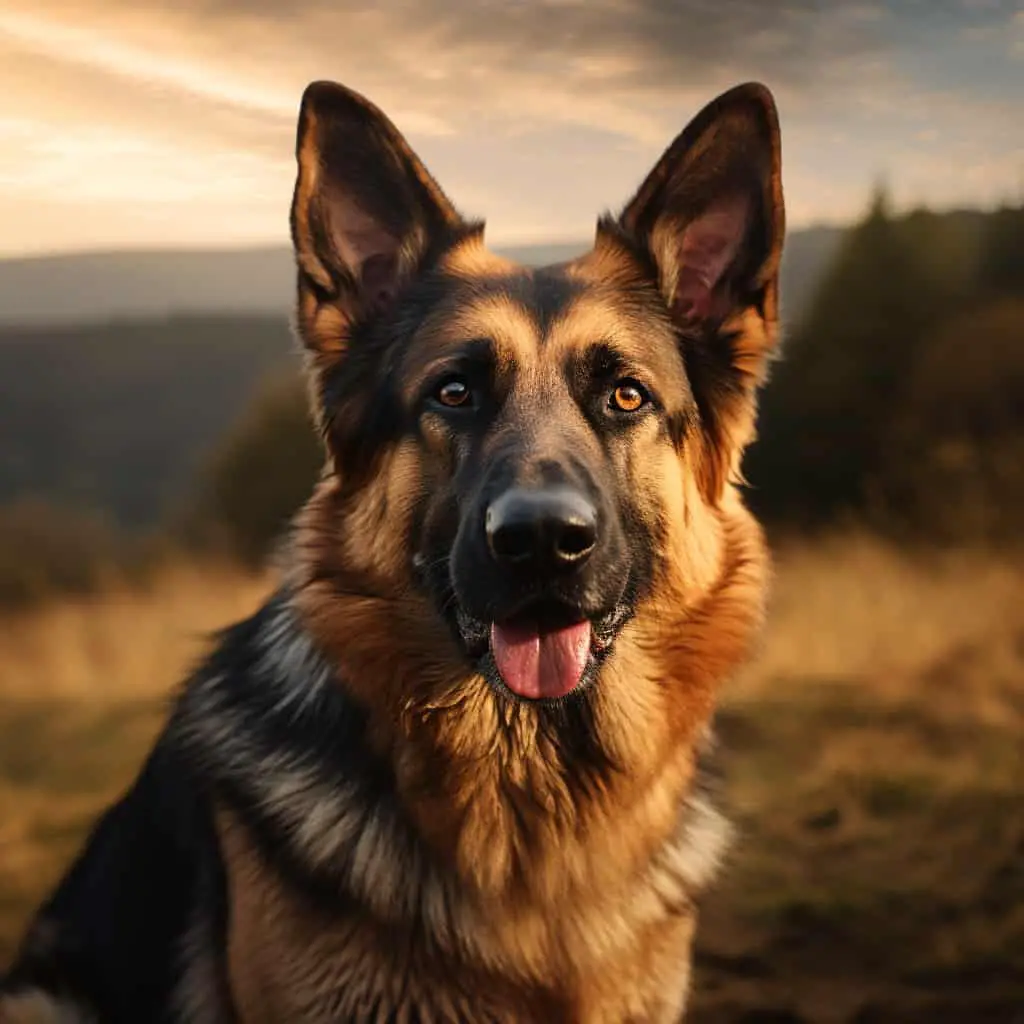Small to medium sized dogs, and big dogs all need good oral care. Because just like us, our dog’s oral care is an important part of their overall health.
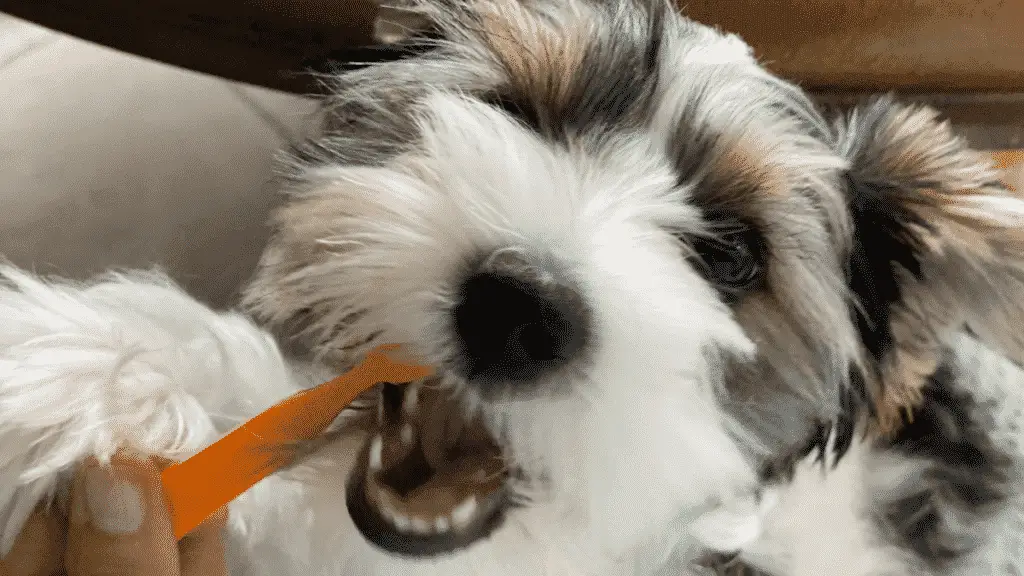
Dental Care Tips For Small, Medium and Big Dogs
Here are some dental care tips for small, medium sized dogs and big dogs.
Small Dogs
Small dogs are much more prone to dental disease than their larger counterparts. This is because they have small jaws and their teeth tend to be crowded. In many cases, their teeth overlap. Some dogs have got retained deciduous teeth. All of this can lead to food impaction and plaque build up.
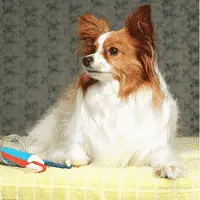
Thankfully, there are lots of things owners can do to keep their small breed dogs teeth in tip top health. Tips from veterinary surgeon, Dr. Linda Simon:
- Get your dog used to tooth brushing from an early age.
- Use a small dog tooth brush and doggy toothpaste.
- Aim for 1 minute of brushing each day if you can.
- Enzymatic powders can be added to water to keep plaque levels low. Similarly, there are plaque reducing gels you can rub on gums. Some dogs tolerate this better than brushing.
- If appropriate for your dog, stick to a dry diet. This should be one aimed at smaller jaws so it is easy to chew. Dry kibble is less likely to cake on teeth and prevents decay.
- Have your vet ensure all your pup’s baby teeth have fallen out by the time they are seven months old. If they have not, they should be surgically removed.
- Be sure to have your dog’s teeth examined at least once a year by a professional. This way, if a dental cleaning is required, it can be done promptly. Leaving too long between dental cleanings can lead to periodontal disease and tooth loss.
Dental Care Tips For Small, Medium and Big Dogs
Medium Sized Dogs
Sometimes medium sized dogs can get away with not having their teeth cleaned. But it’s still important to check the teeth of your dog at least once a month. If you notice tartar build up, discoloration or other abnormalities then call your veterinarian right away.
Big Dogs
Big dogs should have their teeth brushed at least once a week, if not more often depending on their habits. Bigger dogs tend to be able to handle the pain better than smaller ones which is one reason why brushing their teeth isn’t really necessary. Big dogs should still get their teeth brushed though because it helps to prevent dental disease.
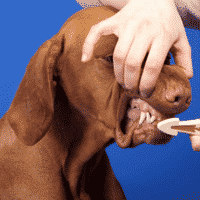
How to Get Your Dog Used to Teeth Brushing?
Most dogs tend to be afraid of the noise that the toothbrush makes. So, if you’re trying to get your dog used to having their teeth brushed, then it helps to introduce them slowly.
Start by rubbing a little bit of peanut butter on the brush and let your dog lick off the peanut butter. After a few times, put the peanut butter from the brush and then onto their teeth.
Once your pooch is used to the idea of getting their teeth brushed, you should move onto brushing them with toothpaste. Right now there are many different kinds available for dogs so finding one that your dog likes shouldn’t be difficult.
Which toothpaste is safe for dogs?
Never use human toothpastes on dogs because these usually contain fluoride that can irritate their gums. human toothpastes also contain xylitol. Xylitol is toxic to dogs. It can cause their blood sugar to drop as well as potentially damage their liver.
How often should I brush my dog’s teeth?
Daily brushing is better than weekly brushing. The more often you brush your dog’s teeth, the less chance there is of dental disease developing and the more likely it is that plaque and tartar will be removed regularly.
Brushing three times a week is the minimum recommendation to help remove plaque and prevent tartar accumulation.
It’s never too early to start cleaning your dog’s teeth as long as their adult teeth have come in. However, sometimes adult dogs need a little time before they get used to having their mouths cleaned regularly. Big dogs tend to take longer to get used to this idea compared with smaller breeds who seem eager from the first time around.
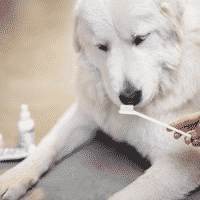
What type of toothbrush should I use for my dog?
You want to use a toothbrush that’s designed for dogs. This will be the safest option because it won’t hurt their gums, but it will still help remove plaque and tartar.
There are several different kinds of dog toothbrushes available. Big dogs usually prefer the larger brush with bigger bristles, while smaller breeds often like one with softer bristles.
Dental Care Tips For Small, Medium and Big Dogs
Electric toothbrush for medium sized dogs and big dogs
The electric toothbrush is the best kind for big or medium sized dogs because it can really provide some scrubbing power when it comes to removing plaque. However, many dogs are afraid of this type of brush so you might have to ease them into using one by letting them lick some peanut butter off of it first.
Finger brush for small to medium sized dogs
This is a small toothbrush that fits over your index finger. It’s great for smaller dogs because they can hold onto it and you can control them better, but some big dogs don’t like the feeling of having something on their teeth.
If brushing isn’t an option, you could try using a water irrigator or special wipes made specifically for pets’ teeth instead. Both are very effective at removing plaque without causing any trauma whatsoever if done properly!
How to Brush your Small to Medium Sized Dogs’ Teeth?
Dogs don’t like the hard bristles of a normal toothbrush so make sure you use one with soft bristles. Big dogs often prefer the larger brush, while smaller breeds tend to go for the softer ones.
- To start off, squirt some toothpaste onto their teeth and then let them lick it off for about 20 seconds before actually brushing their teeth.
- Next, put your hand over their muzzle and gently tilt their head back to lift it up; this way you gain easier access to their mouth.
- Use only an inch or two of the toothbrush to begin with so that your dog doesn’t get too nervous.
- Once they get used to this part, slowly try putting more of the toothbrush inside their mouth.
- Don’t push it too far, as this could make them panic and back away.
Contributor | Dr. Linda Simon MVB MRCVS
Dr. Linda Simon is a veterinary surgeon and also a veterinary consultant for FiveBarks.







